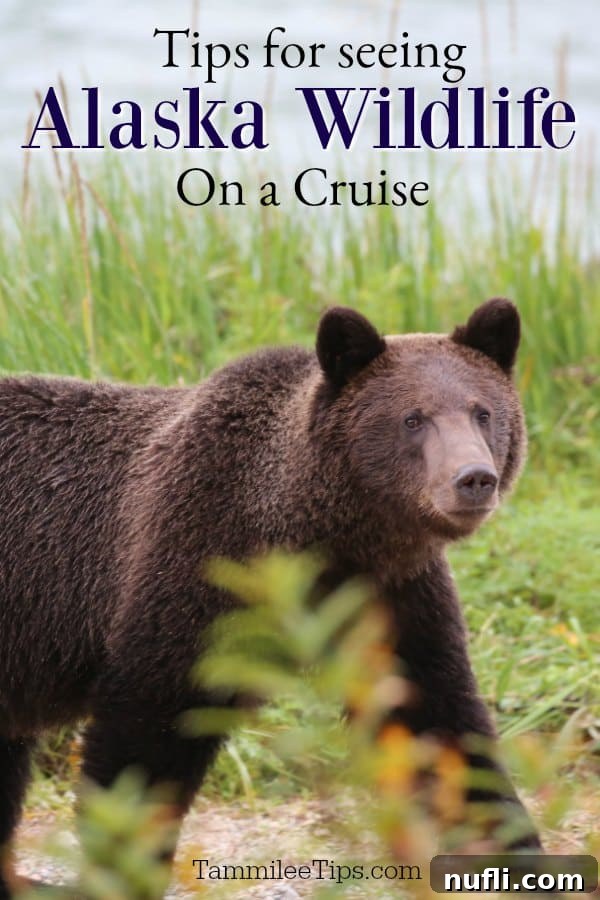An Alaska cruise offers an unparalleled journey into one of the world’s most pristine wildernesses, and for many travelers, the ultimate highlight is the chance to witness its incredible wildlife. From the majestic humpback whales breaching the icy waters to elusive bears foraging along the shorelines, and the iconic bald eagles soaring overhead, Alaska is a living tapestry of natural wonders. This comprehensive guide will equip you with expert tips and strategies to maximize your wildlife viewing opportunities, ensuring your Alaska cruise becomes an unforgettable adventure filled with breathtaking encounters.
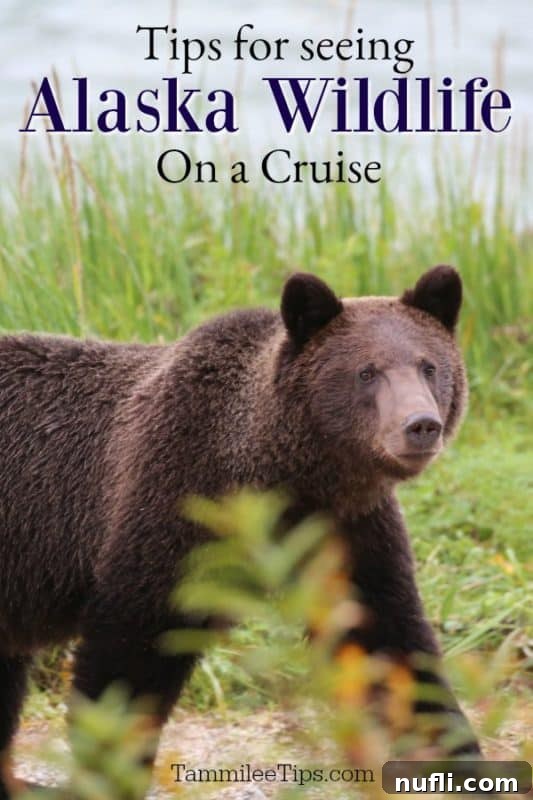
Planning your dream Alaska wildlife cruise? Here are some quick links to help you get started:
- 🏨 Find Hotels and Vacation Rentals
- 📍 Book Amazing Wildlife Excursions & Tours
The Ultimate Guide to Spotting Alaska Wildlife on Your Cruise Adventure
Embarking on an Alaska cruise is an extraordinary opportunity to immerse yourself in a world teeming with diverse animal life. While sightings are never guaranteed, employing the right strategies and being prepared can significantly enhance your chances of memorable encounters. Here are our top tips for observing Alaska’s magnificent creatures.
Preparation is Paramount for Prime Wildlife Viewing
Successful wildlife viewing begins long before you even set foot on the ship. A little preparation goes a long way in ensuring you’re ready when that elusive creature appears.
Essential Gear for Spotting Alaska’s Creatures
- High-Quality Binoculars are a Must: This cannot be stressed enough. While cruise ships might offer a limited selection for sale, investing in a good pair of binoculars (8×42 or 10×42 are excellent choices) before your trip is crucial. Many incredible sights, like mountain goats perched high on cliffs or distant bears along the shoreline, are easily missed with the naked eye. Binoculars bring these distant wonders into sharp focus, transforming a vague shape into a detailed observation.
- Pack Layers for Alaska’s Variable Weather: Alaska’s weather can be notoriously unpredictable, shifting from sunny to rainy, warm to chilly, all within a single day. Dressing in layers (base layer, insulating mid-layer, waterproof and windproof outer shell) is essential. Staying comfortable means you can spend more time on deck, patiently scanning for wildlife, without being driven indoors by the elements. A warm hat, gloves, and waterproof footwear are also highly recommended.
- Camera with a Zoom Lens: To capture those unforgettable moments, a camera with a good zoom lens (at least 300mm or equivalent for mirrorless/DSLR, or a superzoom point-and-shoot) is invaluable. While smartphones are great for close-up shots, they often lack the reach needed for wildlife photography from a moving ship. Don’t forget extra batteries and memory cards!
- Field Guide or Wildlife App: Having a small guide to Alaska’s flora and fauna can enrich your experience, helping you identify the species you encounter and learn more about their natural history.
Mastering the Art of Shipboard Wildlife Spotting
Your cruise ship itself is an excellent platform for wildlife observation. Knowing where and when to look can dramatically increase your success rate.
Utilize Your Ship’s Vantage Points
- Early Bird Gets the Worm (and the Whales!): Many animals, especially whales, are most active during the quieter early morning and late evening hours. These times often coincide with less ship traffic and calmer waters, making sightings more likely. Make an effort to be on deck as your ship pulls into scenic areas like Glacier Bay or Tracy Arm Fjord.
- Scan Shorelines and Waterways: Always keep an eye on the water near the ship and the tree-lined shorelines. Look for any unusual movements, splashes, or contrasting colors. Whales, seals, and sea otters frequent the water, while bears, moose, and deer might be spotted along the land.
- Learn from the Naturalists: Most Alaska cruises have onboard naturalists who provide invaluable commentary, pointing out wildlife and offering insights into the local ecosystem. Attend their presentations and be ready to rush to the deck when they announce a sighting. Their knowledge can significantly enhance your understanding and appreciation.
- Look for “Kelp Fronds” and Current Lines: These areas often indicate nutrient-rich waters that attract a variety of marine life. Whales, sea otters, and numerous bird species are frequently found feeding along these ecological highways.
- Patience and Persistence are Key: Wildlife viewing requires patience. It’s not like watching a show; animals don’t perform on demand. Spend consistent time on deck, scanning the landscape, and you’ll be rewarded.
Targeting Specific Alaska Wildlife Species
Alaska is home to an incredible array of animals. Knowing a little about each species’ habits and preferred habitats can help you pinpoint your search.
Magnificent Marine Mammals of Alaska
- Whales (Humpback, Orca, Gray, Minke): Alaska is world-renowned for its whale watching. Humpback whales, with their spectacular breaches and tail flukes, are frequently seen in the nutrient-rich waters of Southeast Alaska, particularly around Juneau and Icy Strait Point. Glacier Bay is also a prime location. Look for tell-tale signs like spouts (exhalations of air and mist), surface disturbances, or even a full breach. Whales are active all day, but early mornings can be especially productive.
- Seals (Harbor Seals, Stellar Sea Lions):
- Harbor Seals: Often found resting on ice floes, especially in glacial bays like Glacier Bay, where they use these floating ice platforms as pupping areas. Keep a keen eye near Johns Hopkins Glacier for mothers and their pups.
- Stellar Sea Lions: These large, noisy marine mammals often gather in massive colonies, sometimes numbering 200-300 individuals, on rocky outcroppings and small islands. Listen for their distinctive barks and look for large groups hauled out on the rocks.
- Sea Otters: Adorable and playful, sea otters are often seen floating on their backs, sometimes holding paws, in kelp beds. They are particularly abundant at the entrance to Glacier Bay, around Point Packenham as you approach College Fjord, and throughout Prince William Sound. Their characteristic habit of grooming and cracking shellfish on their chests makes them captivating to watch.
Majestic Land Mammals of Alaska
- Bears (Brown/Grizzly, Black): While rarer to spot from the ship, bears are a definite highlight. As you sail into Glacier Bay, keep a vigilant eye on the hillsides and shorelines, especially near salmon streams, where bears might be foraging. Brown bears (grizzlies) are typically larger and have a distinctive shoulder hump, while black bears are smaller and lack this hump. For a higher chance of bear sightings, consider a dedicated bear-viewing excursion.
- Moose: Less common in Southeast Alaska, moose are primarily found in the interior, with a greater chance of seeing them if your cruise extends to Anchorage. It’s not unheard of to spot a moose wandering through town in Anchorage. Some smaller populations have migrated to SE Alaska and can occasionally be seen near Haines and the entrance of Glacier Bay. Look for their distinctive antlers and towering stature in forested areas.
- Mountain Goats: These agile creatures are masters of the rocky terrain. Spotting them requires patience and powerful binoculars, as they blend seamlessly with their surroundings. Look for white “dots” high above the tree line on steep, rocky cliffs and mountainsides.
Spectacular Avian Life of Alaska
- Bald Eagles: The national bird is incredibly prevalent in Alaska. Look for their distinctive white heads and tails, often perched atop the tallest trees, light poles, or even fishing along the shore. One naturalist’s tip is to look for “big golf balls in the trees” – their white heads stand out against the green foliage. Juneau is a particularly good spot for eagle sightings, where they are as common as crows in other regions.
- Puffins (Horned and Tufted): These charming, colorful seabirds are a joy to behold. Look for them bobbing in the water or flying with their distinctive short wings. They are often seen in colonies on rocky islets or near sea lion haul-outs.
- Other Common Birds: Alaska’s shorelines and waterways are home to over 70 different bird species. Keep an eye out for Arctic Terns, Black-Legged Kittiwakes, Surf Scoters, Pigeon Guillemots, Marbled Murrelets, Black Oystercatchers, and Common Murres, among many others.
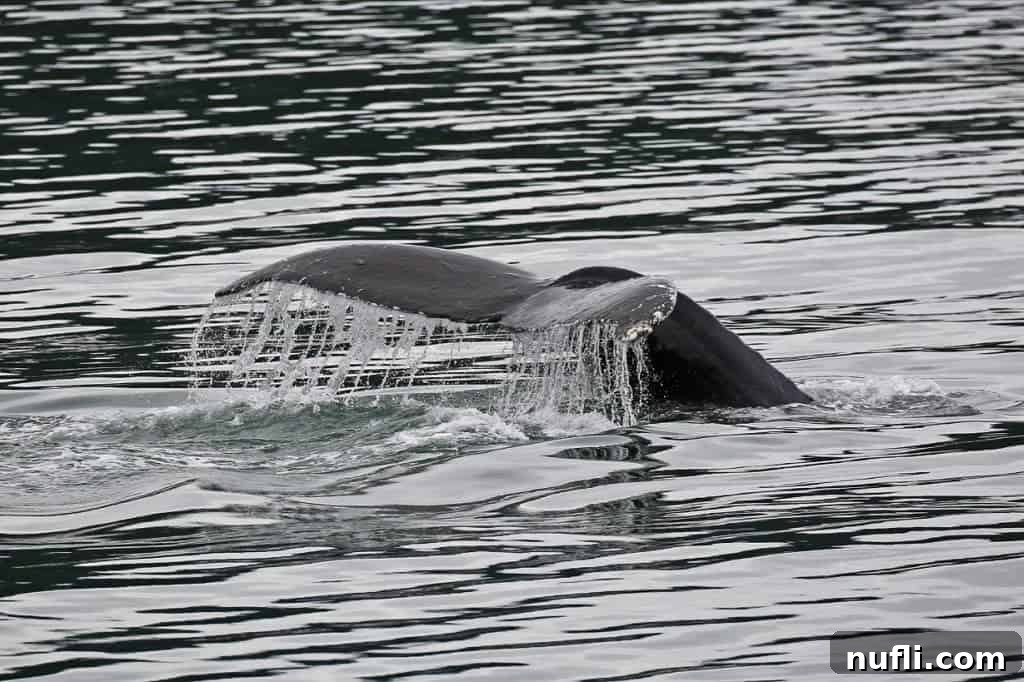
Enhance Your Experience with Specialized Wildlife Excursions
While shipboard viewing is fantastic, booking a dedicated wildlife-focused shore excursion often provides the closest and most in-depth encounters. These tours are led by experienced local guides who know the best spots and times for sightings.
Recommended Wildlife Excursions
- Juneau Whale Watching Excursion: This is a highly recommended tour that consistently delivers incredible humpback whale sightings. Local operators know where to find the whales and often employ hydrophones to listen for their songs, enhancing the experience. We’ve personally witnessed epic humpback whale displays multiple times on this excursion.
- Wildlife Expedition to Haines (from Skagway): If bear viewing is high on your list, a dedicated expedition to Haines can be a game-changer. This excursion offers a fantastic opportunity to see bears in their natural habitat, often feasting on salmon during spawning season. It’s a truly amazing experience and well worth signing up for during your Skagway port day.
- Tracy Arm Fjord Explorer Excursion: Beyond its stunning glacial landscapes, the Tracy Arm Fjord is a haven for wildlife. Excursions into this fjord often reveal humpback whales, harbor seals resting on icebergs, playful dolphins, and a variety of seabirds, providing a comprehensive wildlife viewing experience amidst dramatic scenery.
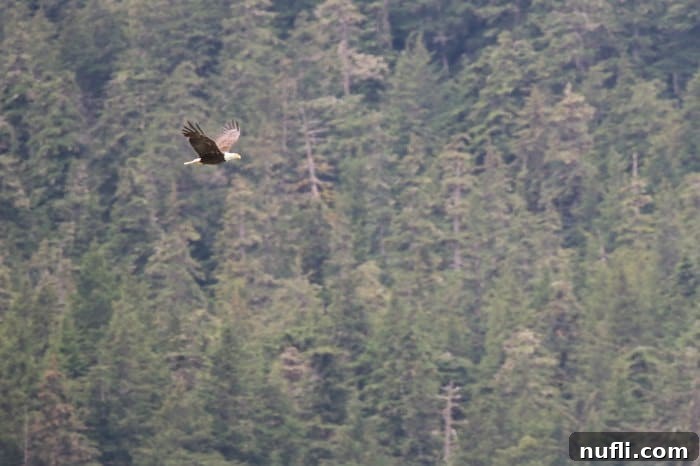
Glacier Bay National Park: A Premier Wildlife Hotspot
Glacier Bay National Park is often a highlight of an Alaska cruise itinerary, and for good reason—it’s an ecological treasure trove. The entrance to Glacier Bay is particularly rich in wildlife. As your ship ventures deeper into the bay, the water can become more silty due to glacial melt, which might affect visibility in some areas, but the entire park offers potential for sightings.
- Bears on the Shoreline: Keep your binoculars trained on the forested slopes and rocky beaches. Bears are often seen foraging along the water’s edge.
- Harbor Seals on Ice Floes: The melting glaciers create numerous ice floes, which harbor seals utilize as resting spots and nurseries for their pups. These are often easier to spot against the white ice.
- Whale Activity: While whales can be found throughout Southeast Alaska, Glacier Bay offers concentrated feeding grounds for various species.
- Sea Otters: Look for these playful creatures in the kelp beds near the entrance and throughout the bay.
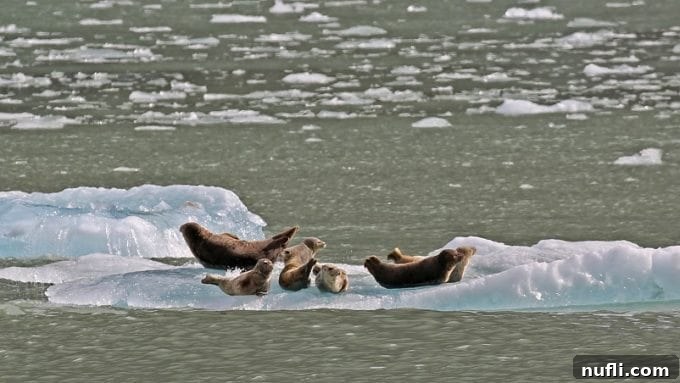
Respecting Wildlife: Ethical Viewing Practices
As you enjoy the magnificent wildlife, it’s crucial to practice responsible viewing to protect these animals and their habitats. Always maintain a respectful distance, never attempt to feed wild animals, and avoid making loud noises that could disturb them. Your cruise ship and excursion guides are well-versed in these practices and will ensure a safe and ethical viewing experience for everyone.
Capturing the Moment: Photography Tips
To preserve your memories, consider these photography tips:
- Telephoto Lens: As mentioned, a good zoom lens is essential. Animals are rarely close enough for a standard lens.
- Stabilization: A monopod or image stabilization features on your lens/camera can help steady shots on a moving ship.
- Fast Shutter Speed: Wildlife moves! Use a fast shutter speed (e.g., 1/500th of a second or faster) to freeze action, especially for birds in flight or breaching whales.
- Continuous Shooting Mode: This allows you to capture a burst of images, increasing your chances of getting that perfect shot.
- Be Ready: Keep your camera turned on and settings adjusted. Wildlife encounters can be fleeting.

Conclusion: An Unforgettable Wildlife Journey Awaits
An Alaska cruise is more than just a vacation; it’s an expedition into one of the last great wildernesses. By preparing effectively, understanding where and when to look, and taking advantage of specialized excursions, you significantly increase your chances of witnessing Alaska’s breathtaking wildlife. From the colossal whales to the majestic eagles and the powerful bears, every sighting is a privilege and a testament to the raw beauty of this incredible state. Get ready for an adventure that promises unforgettable moments and a deeper connection to the natural world.
Additional Alaska Cruise Resources to Plan Your Trip
- Comprehensive Alaska Cruise Packing List
- Detailed Alaska Cruise Ports Guide
- Essential Tips for an Amazing Alaska Cruise
- National Parks Accessible from Your Alaska Cruise
- Exploring Alaska’s Magnificent National Parks
- Check out all of our Alaska Cruise Travel Guides for more in-depth planning.
